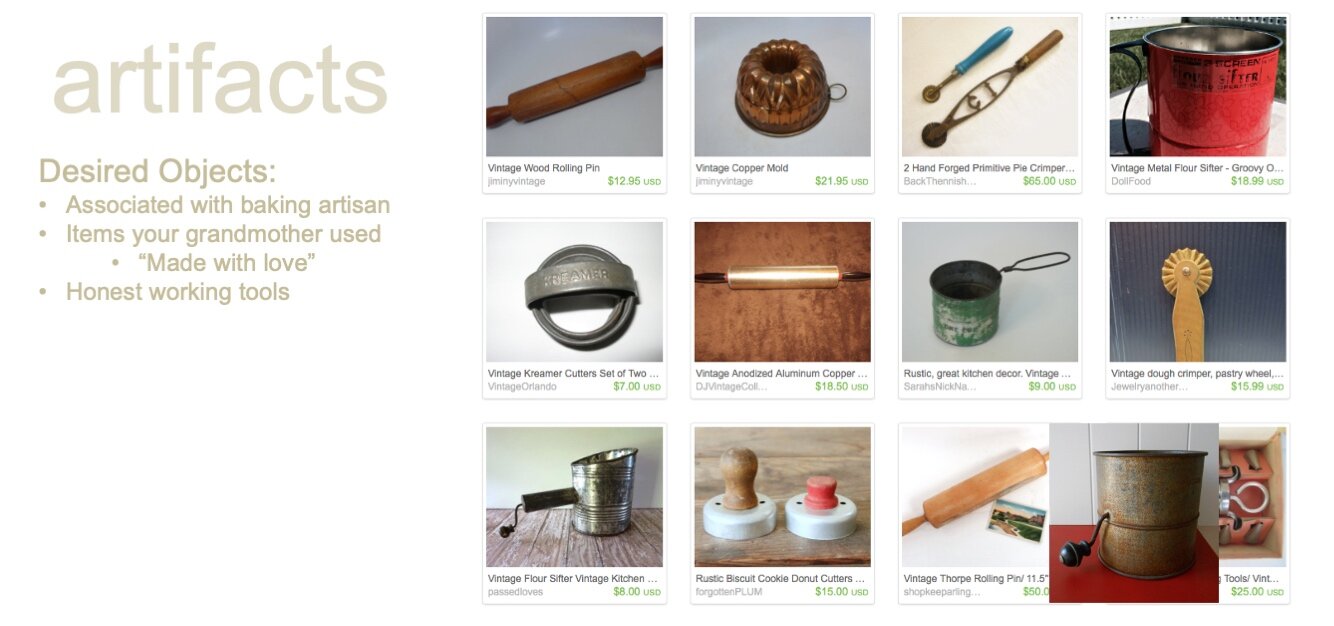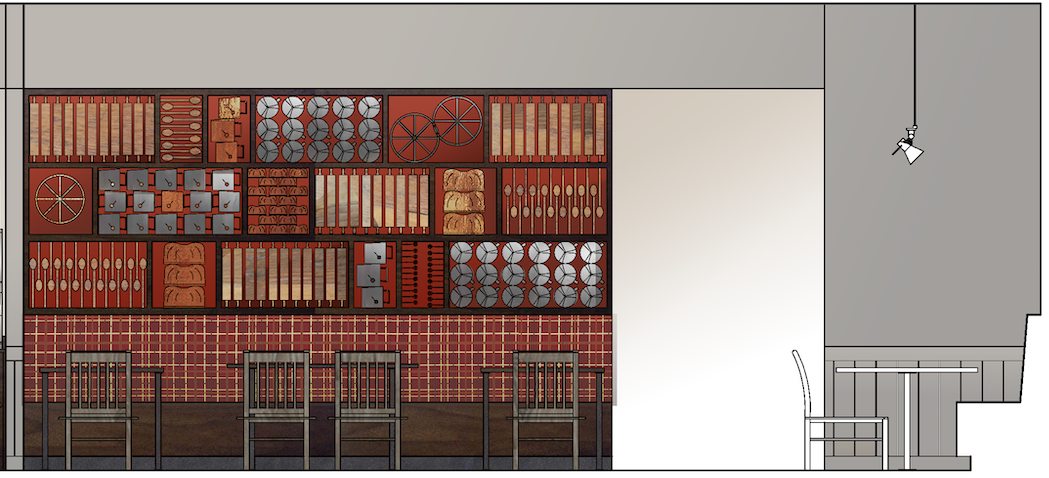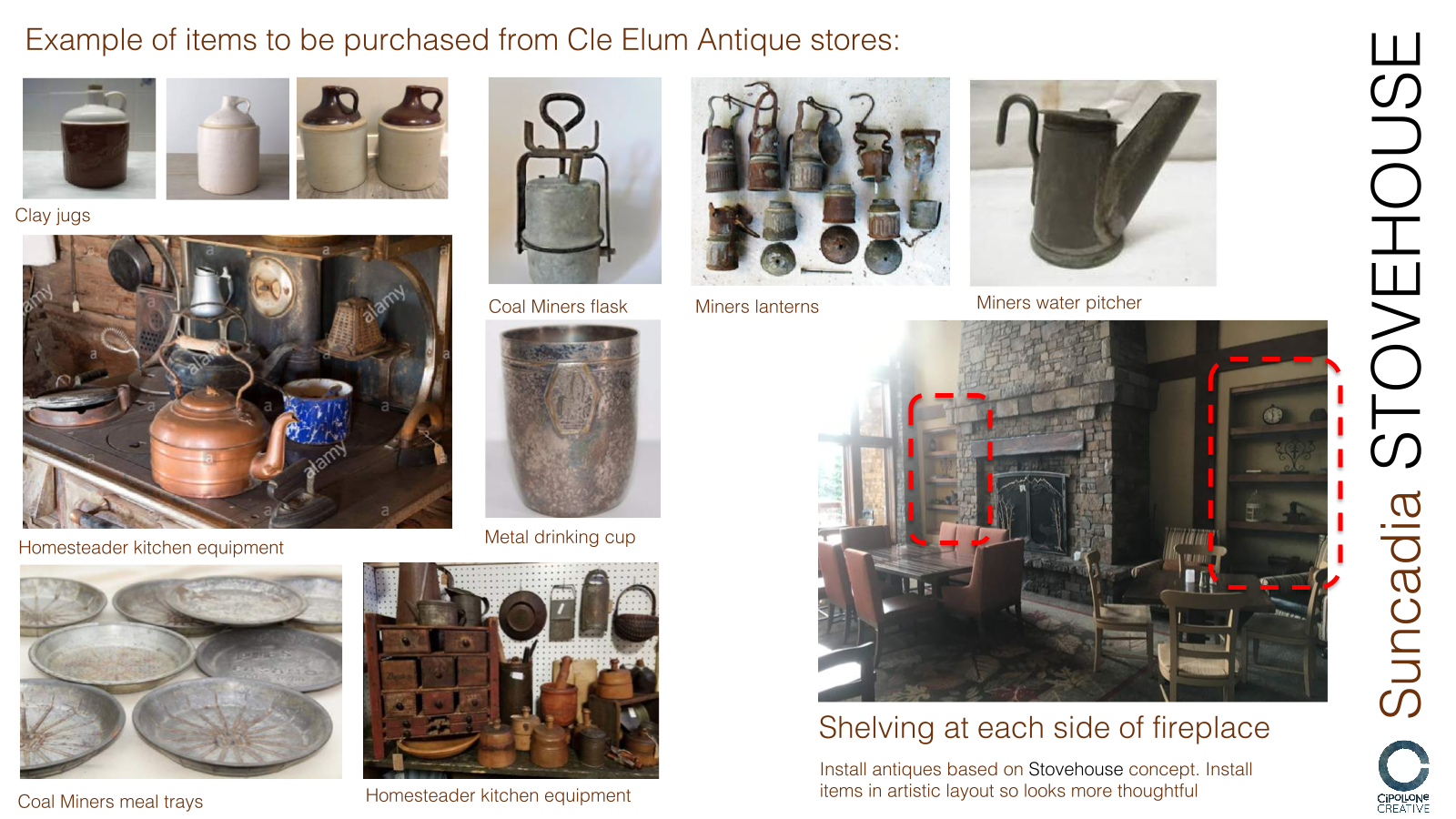Artifacts – adding intrigue to your built environment
Installing authentic artifacts can amplify your brand story
A well integrated and unified collection of artifacts will aid in the telling of your brand’s unique story.
Here are steps to make it work:
FIND THE RIGHT SPOT
Evaluate the architecture. Does your space have an inherent spot for a 3-dimensional art installation?
A blank wall
Niches
Built in shelves
If not, can you create ways to integrate the objects?
Screens added in the room
Millwork ledges or shelves
SOURCE YOUR ELEMENTS
Explore potential items relating to your story & gather photos.
Create an image bank to hone in on desired items - take photos, search eBay, Etsy, Amazon, or Pinterest.
PLAN HOW THE STORY WILL BE TOLD. THINK PROMOTION OF BRAND
Prepare your shopping list as a collection of images. You will be searching for items that match or are similar. It’ helpful to have a reference.
Collect interesting and unusual elements with a unifying relationship to your brand story.
Find objects the customer will see as relatable to the brand.
Measure your items & shelves.
Draw an elevation sketch. Configure the items you are finding within the spaces you have to display them. This will help determine quantities.
START SHOPPING
Prepare your shopping list as a collection of images. You will be searching for items that match or are similar. It’ helpful to have a reference.
Are the items used/relics/new? Search antique stores, goodwill, eBay, garage sales, design accessory stores.
Stay mindful while shopping of the brand color, mood, patina and concept.
Track your findings with photographs.
INSTALL
Bring your sketches, items and hardware to the site
Lay elements on the ground in front of your display area
Be artful - place objects guided by the Principles of Design:
EMPHASIS
Use items that convey meaning to your brand or items complementary of color or scale as focal points
BALANCE
Group objects as forms relating to each other to convey harmony - at times use asymmetry or switch to symmetry
NEGATIVE SPACE
Make the space between objects interesting— this will make objects stand out or fade back.
REPETITION
Group similar items in series
CONTRAST
Place items in relationship to others, colorful to neutral, dark to light, solid to transparent
MOVEMENT
Install objects to move the viewers eyes and interest
VARIETY WITH UNITY
Incorporate a similar color tone and juxtapose with various shapes and forms. Place various types of objects; flat, square, round, shiny, dull which are unified by the your concept
Even though you had a plan, stay artful - move objects so the layout is pleasing and compelling
Look from different perspectives in the room ~ the entry ~ seating area ~ 4’ away & 15’ away. Stay conscious of those Design Principles
Relocate hard to discern objects
Make changes, go buy other items that may be missing, take items away that are jarring.
FINAL STEPS
Attach everything soundly - loose items may fall.
Employees will dust items, securing guarantees placement.
Congrats! You have just created a unique design element for the space… watch social media, do not be surprised when you see you artwork as a backdrop for selfies!!












